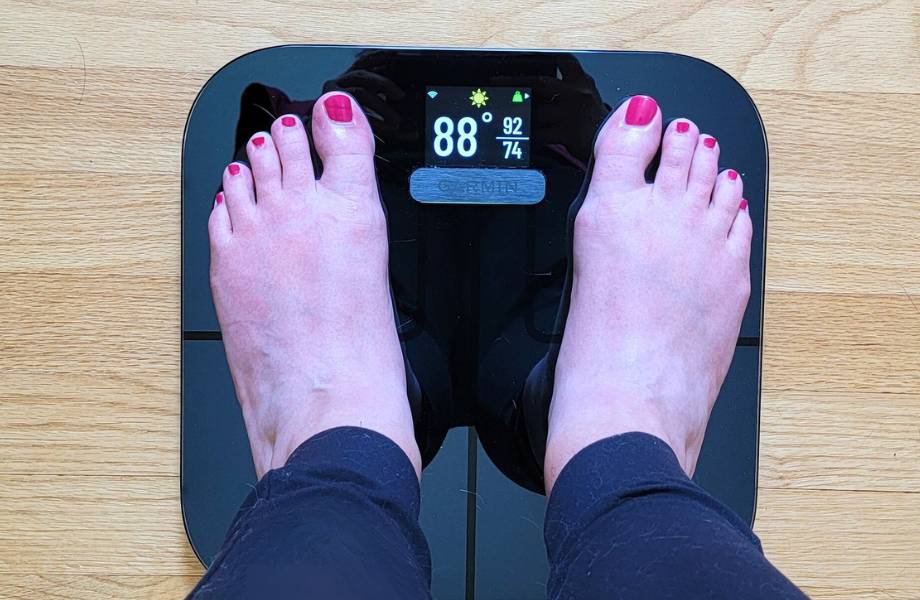We test and review fitness products based on an independent, multi-point methodology. If you use our links to purchase something, we may earn a commission. Read our disclosures.
Body fat levels can have a notable impact on your health. While many people rely on a scale to track progress, body fat percentage can be a better predictor of health1 than weight.
High body fat can put you at greater risk of chronic health problems2, like cardiovascular disease, type 2 diabetes, sleep apnea, and certain cancers. On the flip side, low body fat can impair your immune system3, disrupt hormones (especially in women), and increase the risk of fractures and osteoporosis.
RELATED: What Is Basal Metabolic Rate?
Body fat truly is a Goldilocks moment: You want just enough to keep you healthy but not so much that it contributes to health conditions.
As a functional nutritionist, some of the most common questions I get asked are about body fat: how much you should have, how to measure it, and how to lower it if needed. To answer these (fat) burning questions (and more), I’ve put together a comprehensive guide to body fat percentage.
What Is Body Fat Percentage?
There’s no hidden meaning here. Body fat percentage is as it sounds: The percentage of your body made up of fat compared to your total body weight.
You can use your body fat percentage as part of the measurement for your overall body composition—or how much fat (adipose tissue) you have compared to lean muscle mass. If you lose weight and build muscle through strength training, your body fat percentage may decrease while your weight stays the same.
RELATED: How To Lose Body Fat
This is why fit folks often say, “Muscle weighs more than fat.” While it technically weighs the same—a pound is a pound is a pound—it’s denser and can change the way you look, even without measurable weight loss.
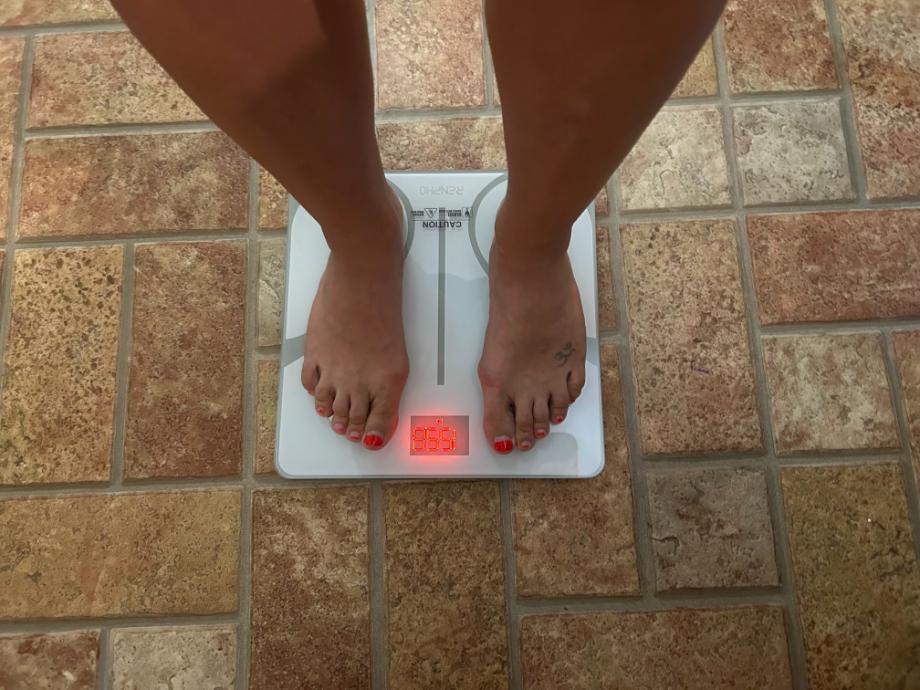
If fat loss is your goal, measuring your body fat percentage is a better way to track your progress than overall weight loss. So, how exactly do you measure it? Read on for a few of the methods for determining your body fat percentage.
How Can You Calculate Your Body Fat Percentage?
There are a number of ways you can calculate your body fat percentage, some of which are more accurate than others. Unfortunately, the most accurate techniques are not always easily accessible (i.e., at hospitals, specialized medical clinics, or fitness centers).
That said, there are a few other techniques, such as skinfold calipers, that you can do more easily in any gym (or at home if you have someone to assist).
RELATED: Weight Loss Statistics
Dual-Energy X-ray Absorptiometry (DEXA scan)
A DEXA scan is one of the most reliable ways to calculate body fat percentage. It works by sending two low-power X-ray beams over the length of your body. These X-rays analyze your fat tissue, lean mass, and bone density.
A DEXA scan can get really detailed. In addition to providing your overall body fat percentage, it can tell you how much visceral fat you have. This is the type of fat that lies deep within your abdominal cavity around your internal organs. A higher amount of visceral fat increases your risk of heart disease, impaired glucose, and metabolic syndrome4, so knowing this percentage can be more valuable than your total body fat.

DEXA scans can also tell you if you’re at risk of developing osteoporosis.
Hydrostatic Weighing
Hydrostatic weighing, also called underwater weighing, measures the amount of water displaced when your body is fully submerged. This involves entering a specialized submersion chamber, getting fully underwater, and expelling all the air from your lungs with a complete exhale.
People with higher levels of fat-free mass and lower body fat weigh more in water5 since bone and muscle are denser. Conversely, higher body fat makes someone lighter in water, so they float more.
While hydrostatic weighing is highly accurate when done right6, it can be difficult for some people to exhale completely or to get all the way under the water.
Bod Pod
A bod pod uses a fancy-sounding technique called air displacement plethysmography to determine your percentage of fat and fat-free mass. Essentially, the machine measures changes in pressure when you’re inside a specialized chamber compared to when it’s empty.
It then uses calculations to determine your total body volume as well as your level of body fat. It takes about 10 minutes, after which you’ll get a detailed report said to be as accurate as hydrostatic weighing7.
Skinfold Calipers
You won’t find DEXA scans or hydrostatic weighing chambers at most gyms, but many personal trainers rely on skinfold calipers to assess body fat percentage. They work by pulling subcutaneous fat—the fat that sits just under your skin—away from the muscle and measuring the thickness. You can then calculate the results from these skinfold measurements into a body fat percentage number.
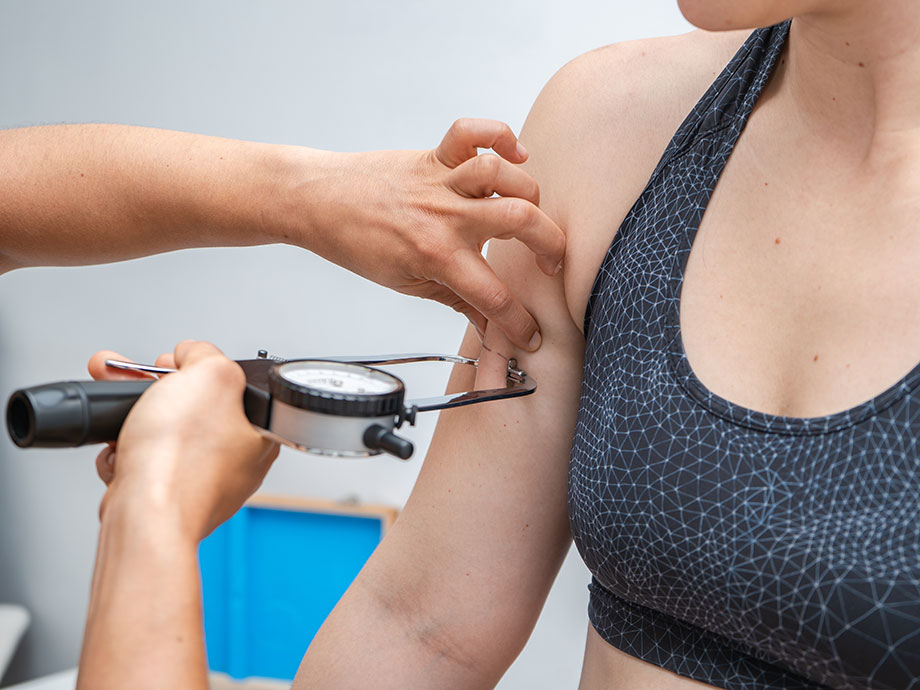
When using skinfold calipers, you’ll typically measure between two and nine different areas to get an accurate assessment. This can include any combination of the following measurements (the more, the better):
- Chest or pectoral
- Mid-Axillary (directly down from the center of your armpit)
- Supra-iliac or flank (just above the hip bone)
- Quadriceps or mid-thigh
- Abdomen
- Triceps
- Biceps
- Subscapular (right below the shoulder blade)
- Calf (taken at the widest point of the inner calf)
It can be difficult to get an accurate measurement with skinfold calipers, so you want to make sure an experienced professional is helping you. Studies show that measurements can be off as much as 8.6%8 when doing them yourself.
Bioelectrical Impedance Analysis (BIA)
Bioelectrical impedance analysis (BIA) measures body fat percentage by how quickly (or not) an electrical current travels through your body. Different types of tissue (fat, muscle, and bone) have different water content. Because of this, they don’t conduct electrical activity in the same way.
By measuring how electrical activity moves throughout your body, the machine calculates the impedance—or resistance to that current—to determine body fat percentage.
This sounds intense, but the electrical current is so small you can’t even feel it. In fact, this is the technology that fancy smart scales rely on. However, research has found these to be inaccurate9. While they can give you a general baseline or at least some reference point, you should take them with a grain of salt.
RELATED: Best Smart Scales
Body Fat Calculator
You can also access free body fat calculators online. To use one, you’ll enter your sex, age, height, weight, and waist, hip, and neck circumference. From there, the calculator will estimate your body fat percentage.
This is the most accessible body fat tool, but it’s also one of the least reliable. Because these calculators don’t take body composition into account at all, they’re not highly accurate.
What Is Considered a Healthy Body Fat Percentage?
Optimal body fat depends on your age and biological sex. The American College of Sports Medicine10 (ACSM) defines the below percentages as “good” or healthy ranges. These are what the average person should strive for.
| Age | 20-29 | 30-39 | 40-49 | 50-59 | 60-69 | 70-79 |
| Men | 11.5-14.8% | 15.9-18.4% | 18.5-20.8% | 20.2-22.3% | 21-23% | 21.2-22.9% |
| Women | 16.8-20% | 17.5-21% | 19.5-23.6% | 22.3-26.6% | 23.2-27.5% | 22.6-26.3% |
If you’re an athlete or a bodybuilder, your body fat percentage goals may be a little lower. For example, a body fat percentage of 7.9% for a 29-year-old man is considered “excellent” and 4.2% is classified as “very lean.”
Dropping your body into these ranges may help improve speed, agility, and muscular and cardiorespiratory endurance11. A lower body fat percentage can also improve range of motion and flexibility.
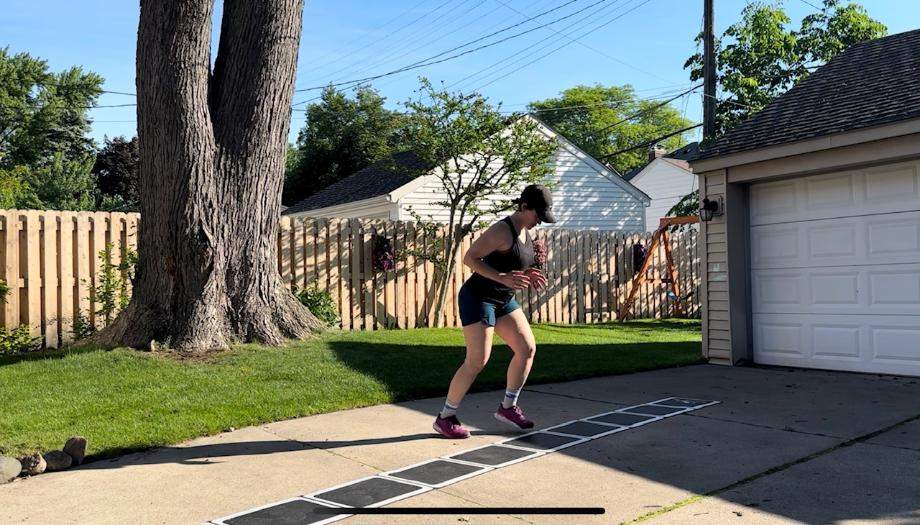
RELATED: Muscular Endurance Exercises
But keep in mind that some of this is essential body fat. Your body needs some fat to carry out basic functions12. Fat supports cell growth, helps your body absorb nutrients, cushions your internal organs, and protects them from damage and trauma.
Because of this, you never want to drop too low, and women naturally need more fat than men. The ACSM recommends no less than 3% body fat for men and 10% to 12% for women.
The Downside of Measuring Body Fat Percentage
While some people swear by body fat percentages, others have critiques—namely that it’s not a very personalized approach. Generalizing people into “healthy” or “unhealthy” based on one metric doesn’t always give a clear picture of their overall health.
These measurements don’t take gender, ethnicity, fitness level, or age differences into account. Everyone is different, and there’s no one-size-fits-all metric for determining health status.
Another critique of body fat percentages is that they’re not highly accurate. The more accessible measurements, like skinfold calipers and body fat calculators, have a large margin for error, so they may not give you the correct information.
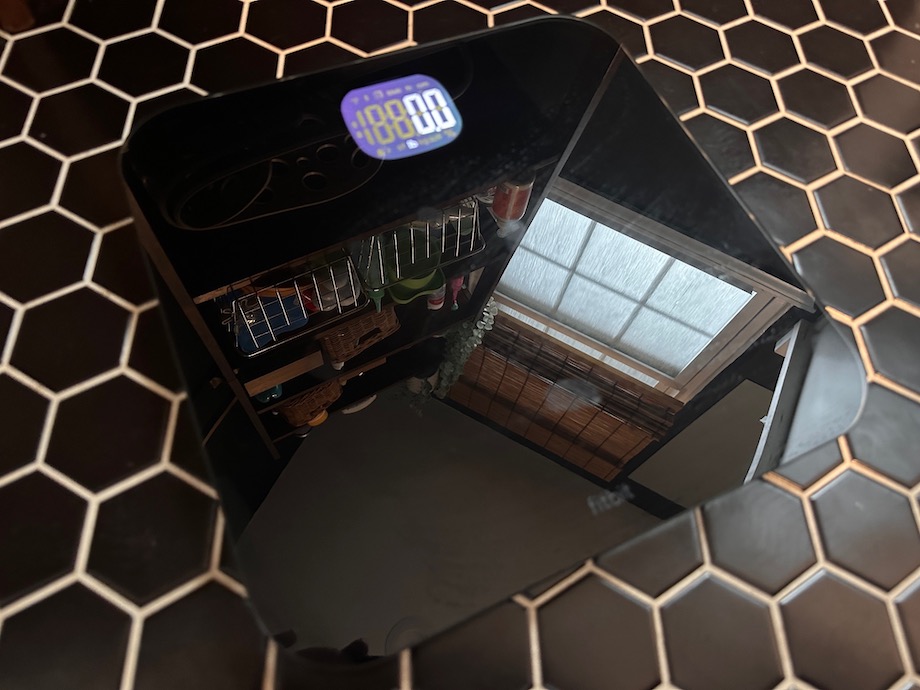
On a related note, it’s important to distinguish between body fat measurement and body mass index (BMI). BMI calculators will take your weight in kilograms and divide it by your height in meters squared. The result is then compared to a standardized chart that tells you whether you’re underweight, a healthy weight, overweight, or obese.
The problem with BMI is that it doesn’t distinguish between your fat mass and muscle mass. For example, if you’re five-foot-five and weigh 200 pounds, it will use your total body weight to classify you as obese, whether that weight comes from lean muscle mass or too much body fat.
The bottom line? When it comes to any standardized measurement, take it with a grain of salt.
A Guide to Body Fat Percentage: Final Thoughts
Body fat percentage can give you some clues about your health, but it’s not the end-all-be-all measurement. If your body fat is too high, taking steps to lower it may reduce health risks and improve your athletic performance. Make sure you’re getting an accurate reading, though—don’t just rely on smart scales or subpar measurements from a non-professional.
A Guide to Body Fat Percentage: FAQs
What should my body fat be for my age?
It depends. For men, a healthy body fat percentage starts at 11.5% for 20 to 29-year-olds and goes up to 22.9% for 79-year-olds. For women, the ideal body fat percentage ranges from 16.8% to 26.3% depending on age. Resources, like the American College of Sports Medicine (ACSM), should be able to help you determine your ideal number based on your age.
At what body fat percentage do you see abs?
There’s no holy grail body fat percentage where you’ll suddenly see abs. It depends on your body type and the type of exercise you’re doing. That said, generally, men may see abs at around 10% to 12% body fat, while abs peek through at about 16% to 20% for women.
Is your body fat percentage important?
To some degree, yes. Body fat percentage can give you some clues to your health. A high body fat percentage can increase your risk of heart disease and diabetes2, while a low body fat percentage may impair your immune system3.
Are body fat scales accurate?
Not definitively, research shows that body fat scales can be largely inaccurate. The most accurate body fat reading is a DEXA scan, often used as the control13 in studies comparing measurement techniques.
References
- Padwal, Raj et al. “Relationship Among Body Fat Percentage, Body Mass Index, and All-Cause Mortality: A Cohort Study.” Annals of internal medicine vol. 164,8 (2016): 532-41. doi:10.7326/M15-1181
- Fruh, Sharon M. “Obesity: Risk factors, complications, and strategies for sustainable long-term weight management.” Journal of the American Association of Nurse Practitioners vol. 29,S1 (2017): S3-S14. doi:10.1002/2327-6924.12510
- UC Davis Health. “Body Composition.” Accessed September 23, 2024.
- Elffers, Theodora W et al. “Body fat distribution, in particular visceral fat, is associated with cardiometabolic risk factors in obese women.” PloS one vol. 12,9 e0185403. 28 Sep. 2017, doi:10.1371/journal.pone.0185403
- Kuriyan, Rebecca. “Body composition techniques.” The Indian journal of medical research vol. 148,5 (2018): 648-658. doi:10.4103/ijmr.IJMR_1777_18
- Burns, Ryan D et al. “Measurement agreement in percent body fat estimates among laboratory and field assessments in college students: Use of equivalence testing.” PloS one vol. 14,3 e0214029. 20 Mar. 2019, doi:10.1371/journal.pone.0214029
- Vescovi, J D et al. “Evaluation of the BOD POD for estimating percentage body fat in a heterogeneous group of adult humans.” European journal of applied physiology vol. 85,3-4 (2001): 326-32. doi:10.1007/s004210100459
- Beam, Jason R, and David J Szymanski. “Validity of 2 skinfold calipers in estimating percent body fat of college-aged men and women.” Journal of strength and conditioning research vol. 24,12 (2010): 3448-56. doi:10.1519/JSC.0b013e3181bde1fe
- Frija-Masson, Justine et al. “Accuracy of Smart Scales on Weight and Body Composition: Observational Study.” JMIR mHealth and uHealth vol. 9,4 e22487. 30 Apr. 2021, doi:10.2196/22487
- American College of Sports Medicine. “ACSM’s Guidelines for Exercise Testing and Prescription.” 2019.
- França, Cíntia et al. “Speed and Agility Predictors among Adolescent Male Football Players.” International journal of environmental research and public health vol. 19,5 2856. 1 Mar. 2022, doi:10.3390/ijerph19052856
- Harvard Health Publishing. “Know the facts about fat.” Published April 19, 2021.
- Pineau, Jean-Claude, and Fernando V Ramirez Rozzi. “Measuring body fat-How accurate is the extrapolation of predictive models in epidemiology?.” PloS one vol. 17,2 e0263590. 10 Feb. 2022, doi:10.1371/journal.pone.0263590
Further reading

Looking for the best continuing education courses for personal trainers? Our guide will help you choose the perfect course to earn your next CEUs. Read more

The Kabuki Strength Kadillac Bar is the best multi-grip bar we've reviewed. It features high attention to detail on areas that matter, a camber angle borrowed from the ever-popular Duffalo Bar, and a fit and finish that is top-notch. If you want the best and can stomach the price tag, we recommend the Kadillac. Read more

Clench Fitnesshas created a Band Handle that allows trainees to use bands without having to hold them in their hands. It's a unique idea that's done well and is perfectly suited for the home gym owner. They also create bands, however, any standard band will work in the handle. Read more

Take a look at our full Sunny Health and Fitness SF-E902 Air Walk Trainer review to see what we really think about this inexpensive cardio machine. Read more

